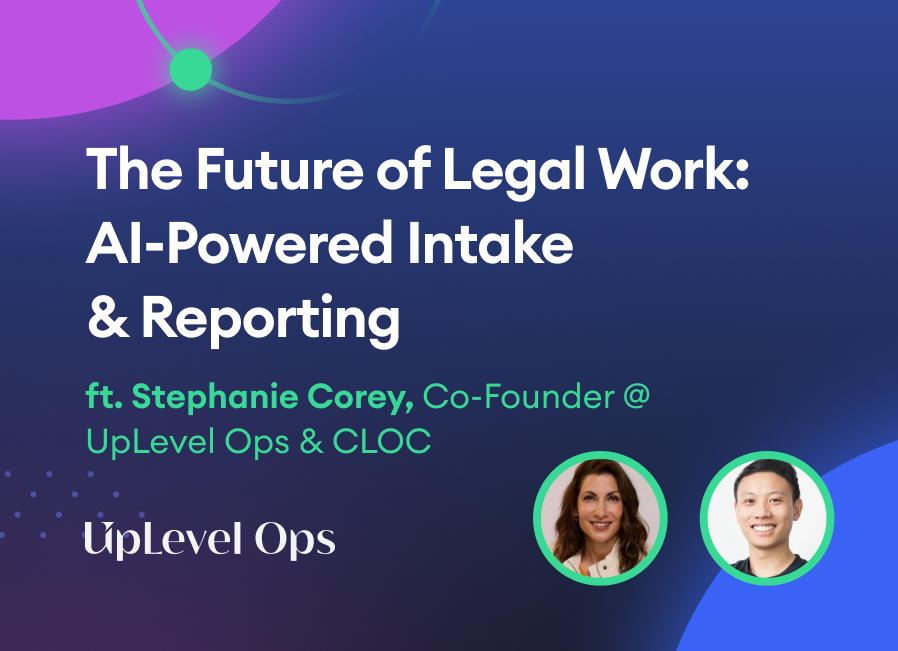Webinar
Evaluating and Selecting a Workflow Automation Provider
Join us as we reveal the systematic approach that Brian Hupp has refined as his best practice over years of evaluating workflow tools.
- 00:09 Series intro & episode focus
- 00:47 Brian’s background (EA, Dolby, Facebook/Meta; UpLevel Ops)
- 01:25 What this episode covers (readiness → requirements → vendor selection)
- 01:56 Photography sidebar & how pre-visualization maps to legal ops
- 05:56 Why low-/no-code workflow is foundational for legal
- 07:11 Breaking out of “NDA-only” thinking with creative visualization
- 08:22 Beyond legal: marketing review, TM clearance, compliance use cases
- 09:45 Make friends with Ops in HR/IT/Finance; share costs & scale
- 11:18 Going deeper: MSA/SOW awareness, lookups, guard-railed edits
- 15:32 Do you need workflow vs. CLM? Start with the pain points
- 18:47 Why workflow is more foundational; CLM still important but narrower
- 22:50 Don’t rush to tools—run discovery/readiness first
- 24:58 Map goals, processes, integrations, people impacts
- 31:48 Readiness outputs: data maps, metadata tables, demo scripts
- 33:20 Include the business early—avoid designing in an echo chamber
- 35:34 The “cheat sheet”: must-have workflow capabilities
- 37:56 Vendor responsiveness & user community matter
- 40:07 GenAI features to watch: FAQ/chat, Teams/Slack launching
- 41:38 Design for zero-training end-user experiences
- 43:22 Be ready for IT’s “we have ServiceNow/Jira” → run a demo-off
- 46:34 Shortlist to selection: UX fit, InfoSec/IT review, integrations
- 49:44 Pricing traps (per-workflow packages) & planning phases 2–3
- 50:25 ROI: why workflow usually pays for itself fast
- 52:19 GenAI roadmap: walled-garden chat, cross-tool assistants, AI-built flows
See Related
.jpg)
Webinar
48 Minutes

Webinar
44 Minutes
.jpg)
Webinar
51 Min

Webinar
56 Minutes

Webinar
44 Minutes

Webinar
50 Minutes

Webinar
55 Minutes

Webinar
57 Minutes

Webinar
56 Minutes

Webinar
56 Minutes

Webinar
41 Minutes



.jpg)